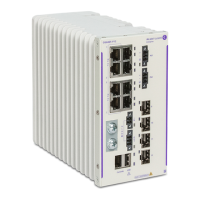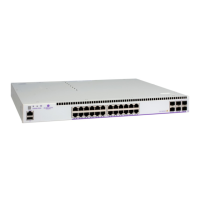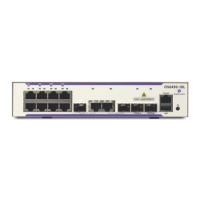Services
7210 SAS M Services Guide Page 35
Configuration Notes for use of Default QinQ SAPs for transit service in a
ring deployment
• If an Epipe service is used with Default QinQ SAPs on the ring ports for transit service in
a ring deployment, no protection mechanism is available for the transit service (that is,
Epipe service with the Default QinQ SAPs on ring ports). Both Epipe and VPLS services
which are originating on different nodes in the ring can use the transit service. Protection/
Loop-detection mechanisms can be implemented for VPLS service configured in the ring
nodes, by using MVPLS with XSTP on the nodes where the VPLS service is configured.
No protection mechanisms are available for use with Epipe services on the node that
originates the service.
• If a VPLS service is used with Default QinQ SAPs on the ring ports for transit service in a
ring deployment, either MVPLS/xSTP or G8032 can be used to protect the transit service
(that is, VPLS service with the Default QinQ SAPs on ring ports). In this case, VPLS
service which are originating on different nodes in the ring and use the transit VPLS
service are also protected. Epipe services which are originating on different nodes in the
ring cannot use the transit VPLS service.
• When using VPLS service with Default QinQ SAPs for transit service with either G8032
or MVPLS with xSTP configured for protection, load-balancing of the traffic based on the
VLAN IDs is not possible. If load-balancing is desired then it is better to use Epipe
service with Default QinQ SAPs as the transit service.
Services and SAP Encapsulations
Table 2 lists the service and SAP Encapsulation information for Ethernet ports:
Table 2: Service and Encapsulation
Port Type Encapsulation
Ethernet Null
Ethernet Dot1q
Ethernet QinQ

